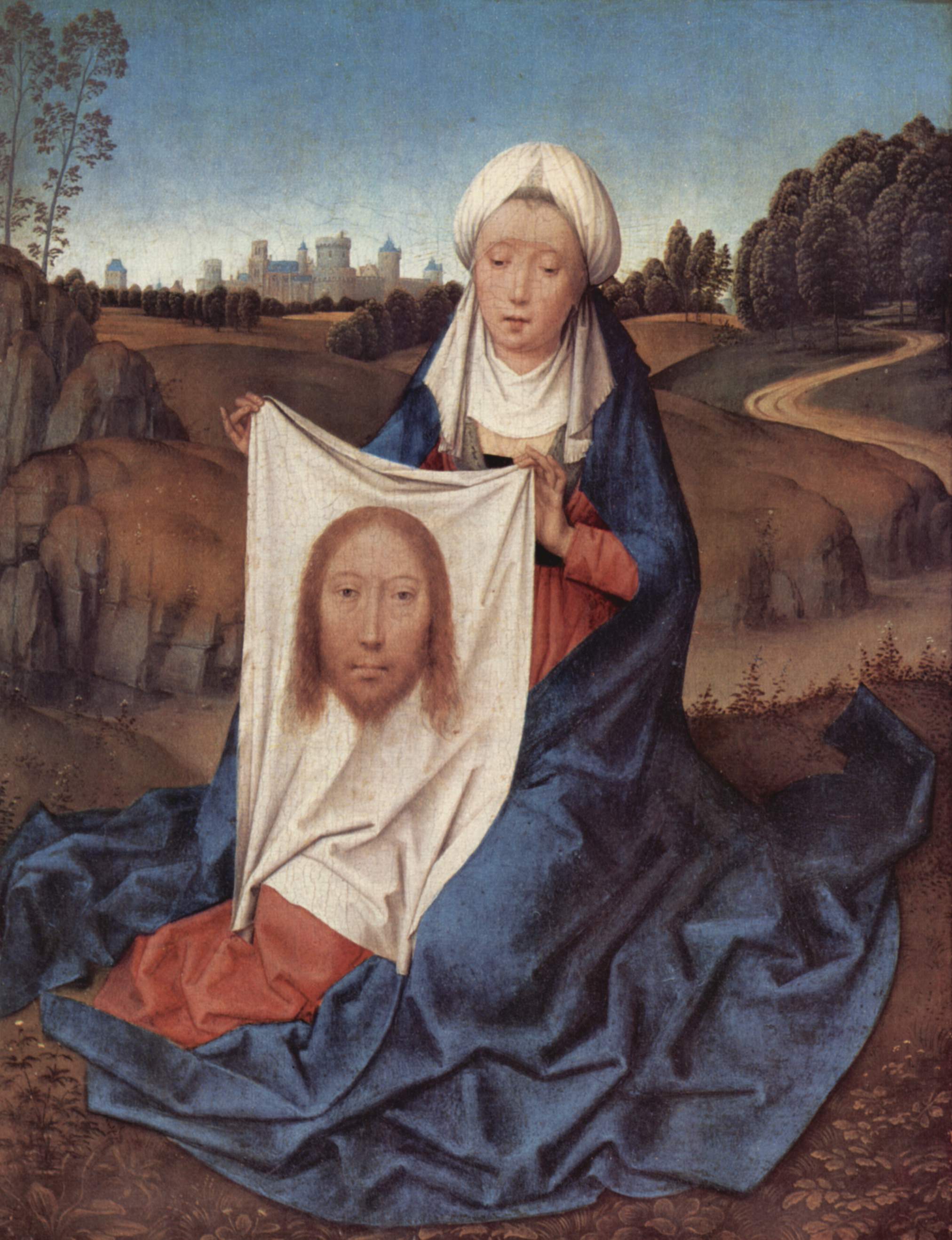
Saint Veronica
Saint Veronica, also known as Berenike,[3] was a widow from Jerusalem who lived in the 1st century AD, according to extra-biblical Christian sacred tradition.[4] A celebrated saint in many pious Christian countries, the 17th-century Acta Sanctorum published by the Bollandists listed her feast under July 12,[5] but the German Jesuit scholar Joseph Braun cited her commemoration in Festi Marianni on 13 January.
For the Italian saint, see Veronica Giuliani. For the Billy Talent song, see Saint Veronika. For the Syrian saint, see Febronia of Syria. For other uses of saintly "Berenice", see Berenice (disambiguation). For other uses of saintly "Veronica", see Veronica (disambiguation).
Saint
Veronica
1st century AD
Caesarea Philippi or Jerusalem, Judea
July 12[1]
Cloth that bears the image of Christ's face
images; laundry workers, pictures, photos, photographers,[2] Santa Veronica, San Pablo City, Laguna
According to Church tradition, Veronica was moved with sympathy seeing Jesus carrying the cross to Calvary and gave him her veil so that he could wipe his forehead. Jesus accepted the offer, and when he returned the veil the image of his face was miraculously captured on it. The resulting relic became known as the Veil of Veronica.[6][7][8]
The story of Veronica is celebrated in the sixth Station of the Cross in Anglican, Catholic, and Western Orthodox churches.[4][9][10]
Official patronage[edit]
Saint Veronica is the patron of the French mulquiniers whose representations they celebrated semi-annually (summer and winter) as in many pious Christian countries. She is also the patron saint of photographers, and laundry workers.



